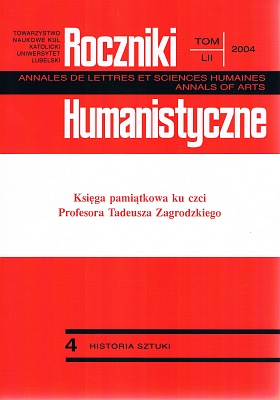Władysław Oleszczyński’s Roman footprints, or on several sources for studying an artist’s life
Abstract
Władysław Oleszczyński (1808-1866) was the most outstanding Polish sculptor and medallist of the Romantic epoch, the author of the first – not existing any more today – monument of Adam Mickiewicz in Poznań (1857), who, as a participant in the November Uprising was forced to remain in emigration, mainly in France, where he carried out a lot of works for the French society. He died and was buried in Rome.
We know relatively little about Oleszczyński's private life, or about the very person of the artist. In the record office of the Community of the Resurrection in Rome there are two interesting documents. One of them is a list of things deposited with the Community after the artist's unexpected death; and the other one is detailed information about the expenses connected with his burial.
In the office there is also one letter written by Władysław Oleszczyński to the Ressurectionists in March 1861, a copy of the artist's another – earlier – letter, a couple of letters written by his brother Antoni several months after the sculptor's death, and two letters written by his widow at roughly the same time. From them we learn the inside story of the stormy ending of Władysław Oleszczyński's marriage to an unknown French woman, which lasted for nearly thirty years. Although the cited documents and letters do not give unambiguous answers to many questions, they still broaden our knowledge of that extraordinary artist.
Copyright (c) 2004 Roczniki Humanistyczne

This work is licensed under a Creative Commons Attribution-NonCommercial-NoDerivatives 4.0 International License.





